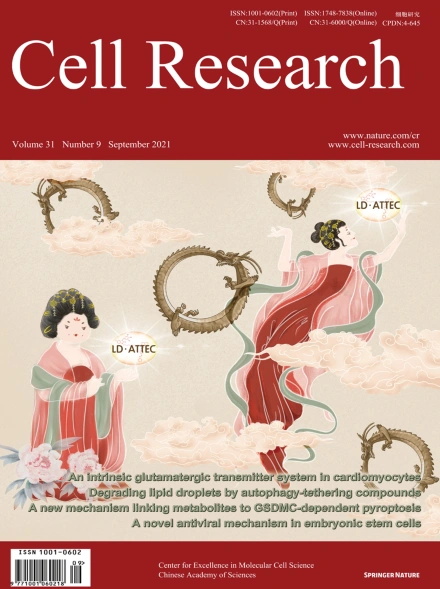
Advanced Search
Submit Manuscript
Advanced Search
Submit Manuscript
Volume 31, No 9, Sep 2021
ISSN: 1001-0602
EISSN: 1748-7838 2018
impact factor 17.848*
(Clarivate Analytics, 2019)
Volume 31 Issue 9, September 2021: 1024-1027
Hsp70 chaperones TDP-43 in dynamic, liquid-like phase and prevents it from amyloid aggregation
Jinge Gu1,2,† , Chen Wang1,2,† , Rirong Hu1,2,† , Yichen Li3 , Shengnan Zhang1,2 , Yunpeng Sun1,2 , Qiangqiang Wang1 , Dan Li3 , Yanshan Fang1,2,* , Cong Liu1,2,*
1Interdisciplinary Research Center on Biology and Chemistry, Shanghai Institute of Organic Chemistry, Chinese Academy of Sciences, Shanghai, ChinaDear Editor,
TAR DNA-binding protein 43 kDa (TDP-43) undergoes liquid–liquid phase separation (LLPS) and forms reversible, cytoprotective nuclear bodies (NBs) under stress.1 Abnormal liquid-to-solid phase transition condenses TDP-43 into irreversible pathological fibril, which is associated with neurodegenerative disorders including amyotrophic lateral sclerosis (ALS) and frontotemporal degeneration (FTD).2,3 However, the mechanisms by which cells maintain the highly aggregation-prone protein in the liquid-like phase and prevent TDP-43 NBs from aggregation under stressed conditions remain elusive. Molecular chaperones play a crucial role in maintaining protein homeostasis. Heat shock protein (Hsp) 70 can interact with TDP-434 and increase of Hsp70 suppresses TDP-43-mediated toxicity in fly models.5 Importantly, ALS patients with TDP-43 aggregates exhibit significantly decreased Hsp70 levels,6 suggesting that Hsp70 maintains TDP-43 proteostasis and that its dysregulation may be involved in pathological aggregation of TDP-43 RNA–protein granules in ALS and related diseases.
https://doi.org/10.1038/s41422-021-00526-5